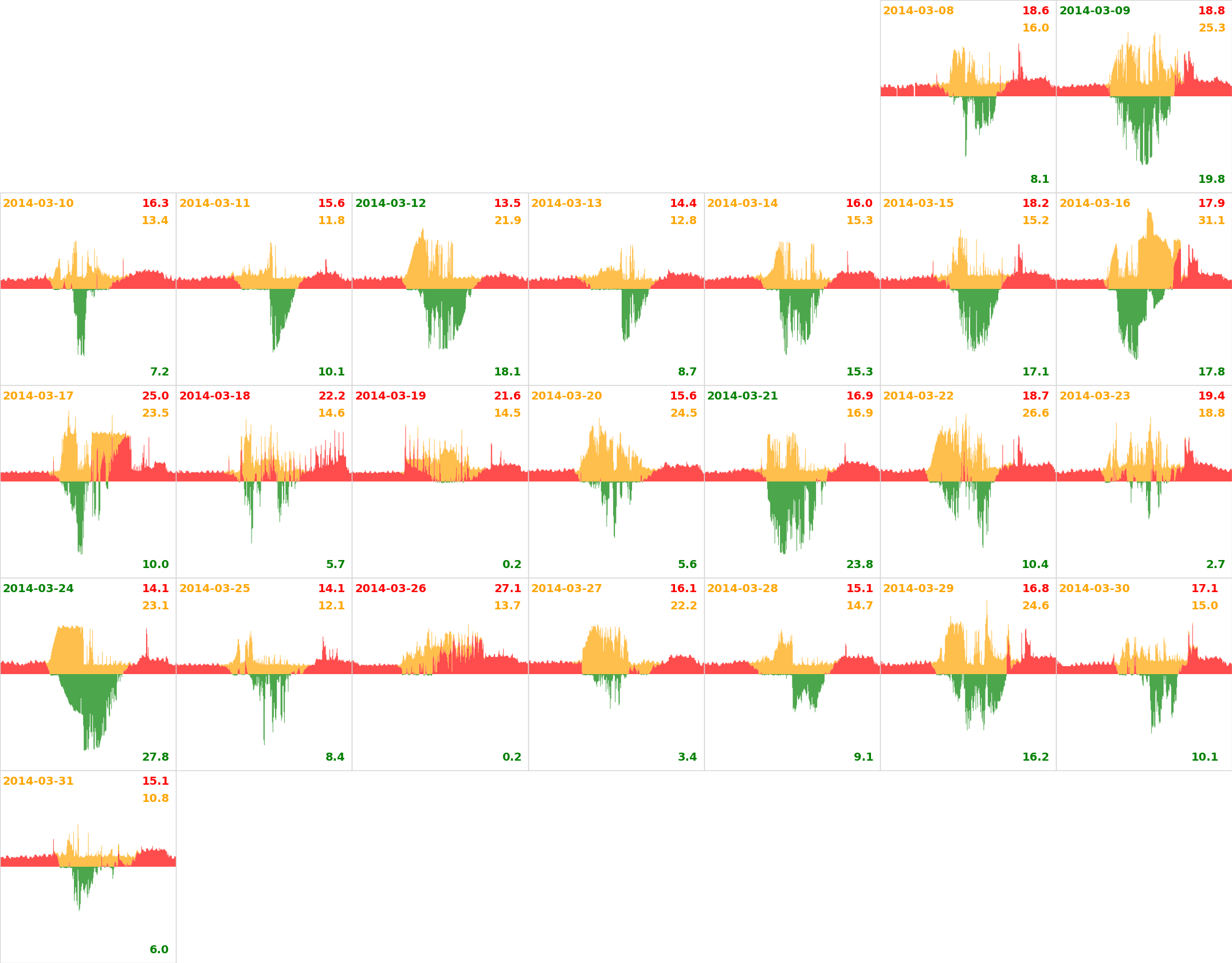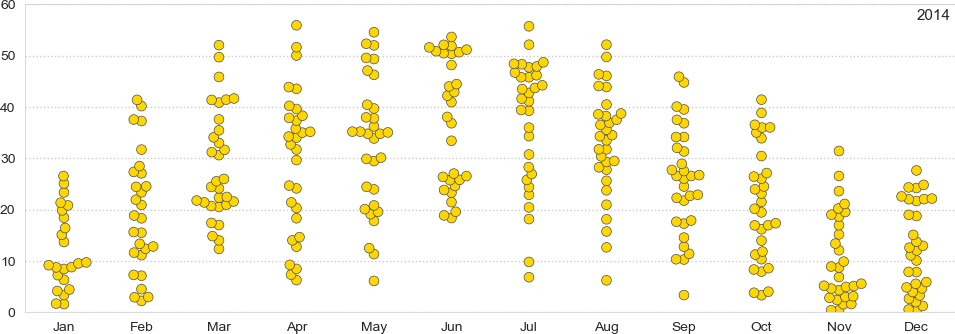
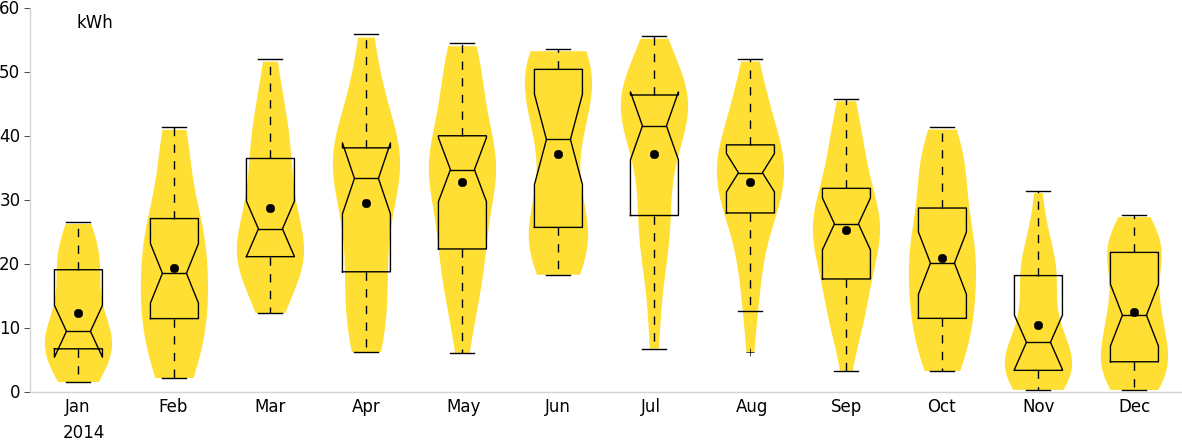
Graphs of the electricity generation statistics gathered from our solar PV generation system, 2014.
Our daily power generation in kWh (bars), along with minimum (dot-dashed), lower quartile (dashed), median (solid), upper quartile (dashed), maximum (dot-dashed) running averages over the previous 14 day sliding window.

Our daily power generation in kWh, per month, using (a) a jitter plot (some jitter is applied to the horizontal position, to prevent overlapping) and (b) violin plots (a notched box and whisker plot—where the box shows the inter-quartile range, with 95% confidence interval notches; whiskers show data within 1.5*IQR—plus a kernel density plot). The final, partial, month tends to have larger notches, because it has less data.


The horizontal time axis runs from 3:00am to 9:00pm GMT. There is one line of data per day. Data is gathered every 5 minutes.
Each pixel represents the energy generation at the sample point. The colour indicates the energy generation in the relevant interval: darker colours indicate more energy.
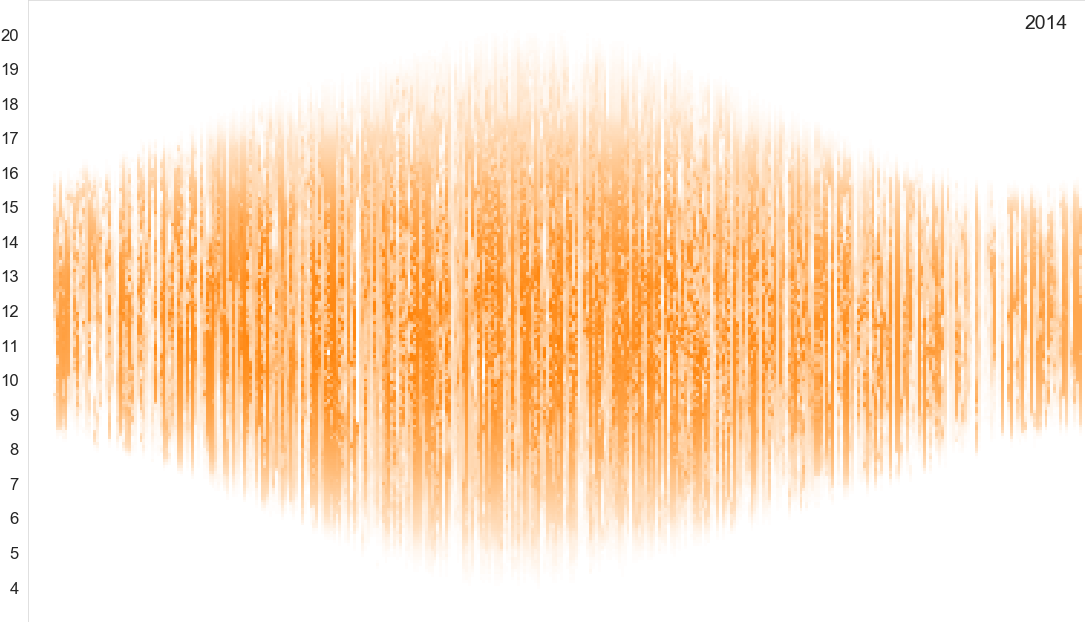
Each pixel represents the cumulative energy generation at the sample point, normalised for the day.
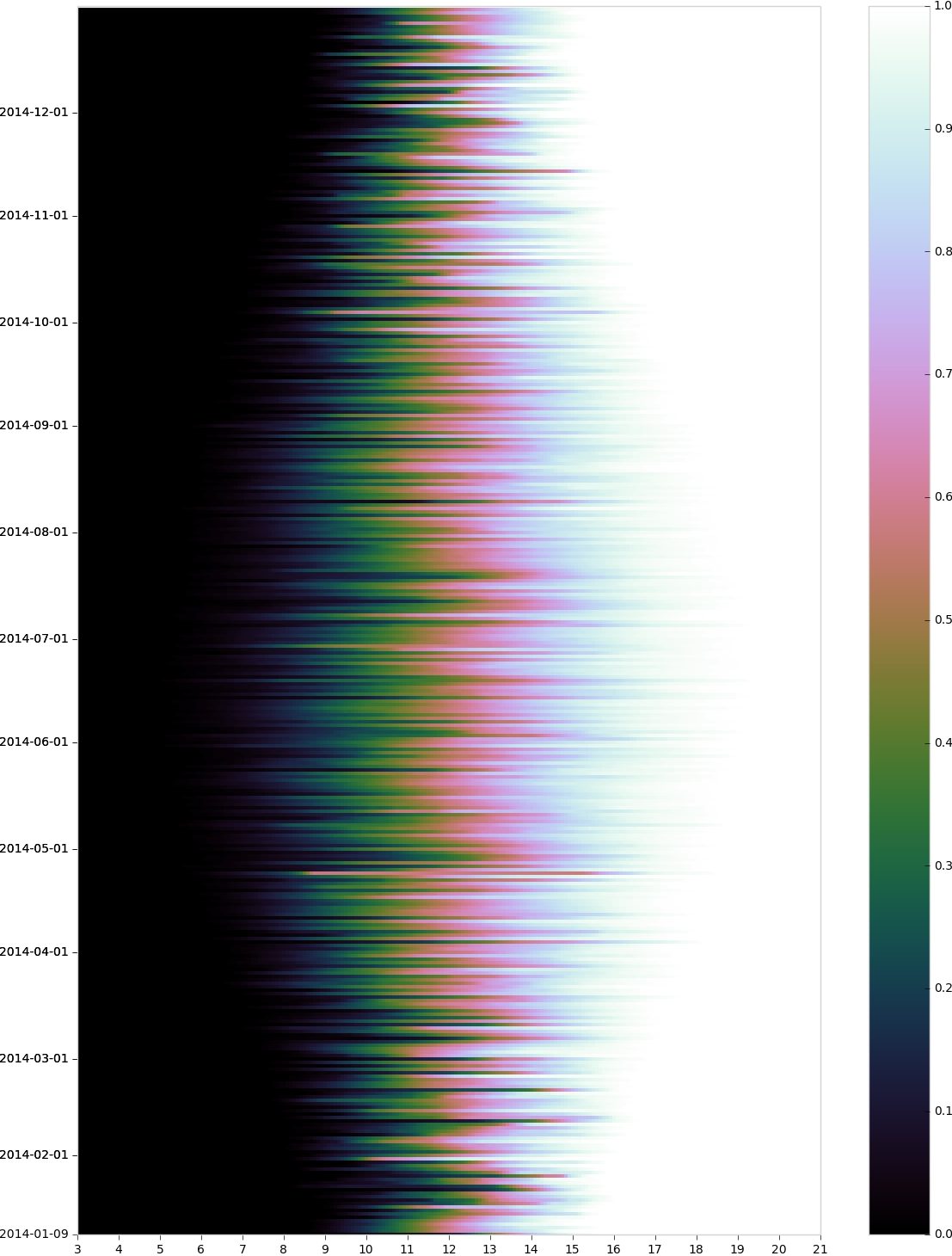
Data is gathered at 5 minute intervals. The horizontal time axis runs from 3:00am to 9:00pm GMT. The vertical axis runs from zero to 8kW. The orange regions indicate the minimum, lower quartile, median, upper quartile, and maximum generation at that time, over the month. The line indicates the actual generation at that time (or the monthly mean, for the monthly average plots). The number in the top right is the total generation in kWh that day (or the monthly mean, for the monthly average plots).
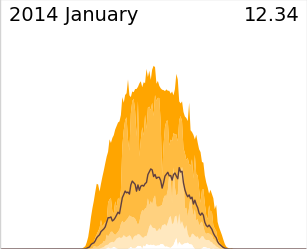
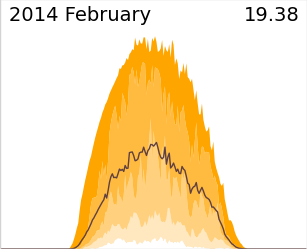
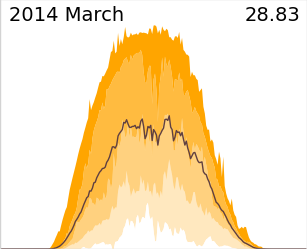
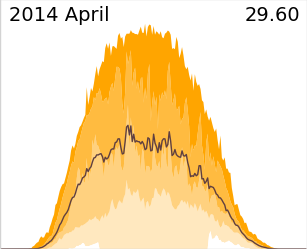
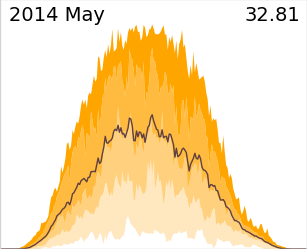
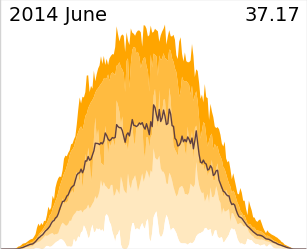
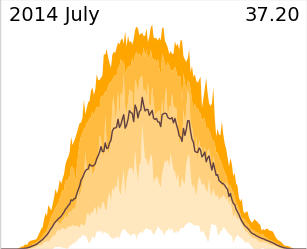
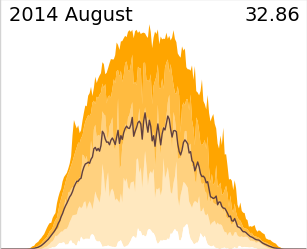
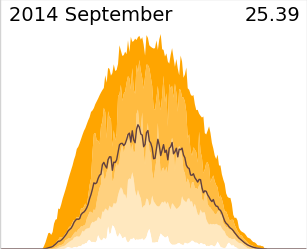
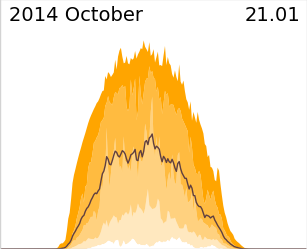
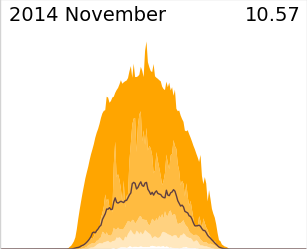
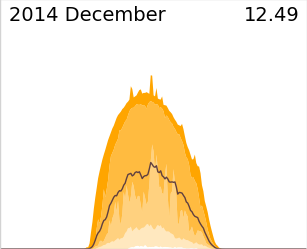
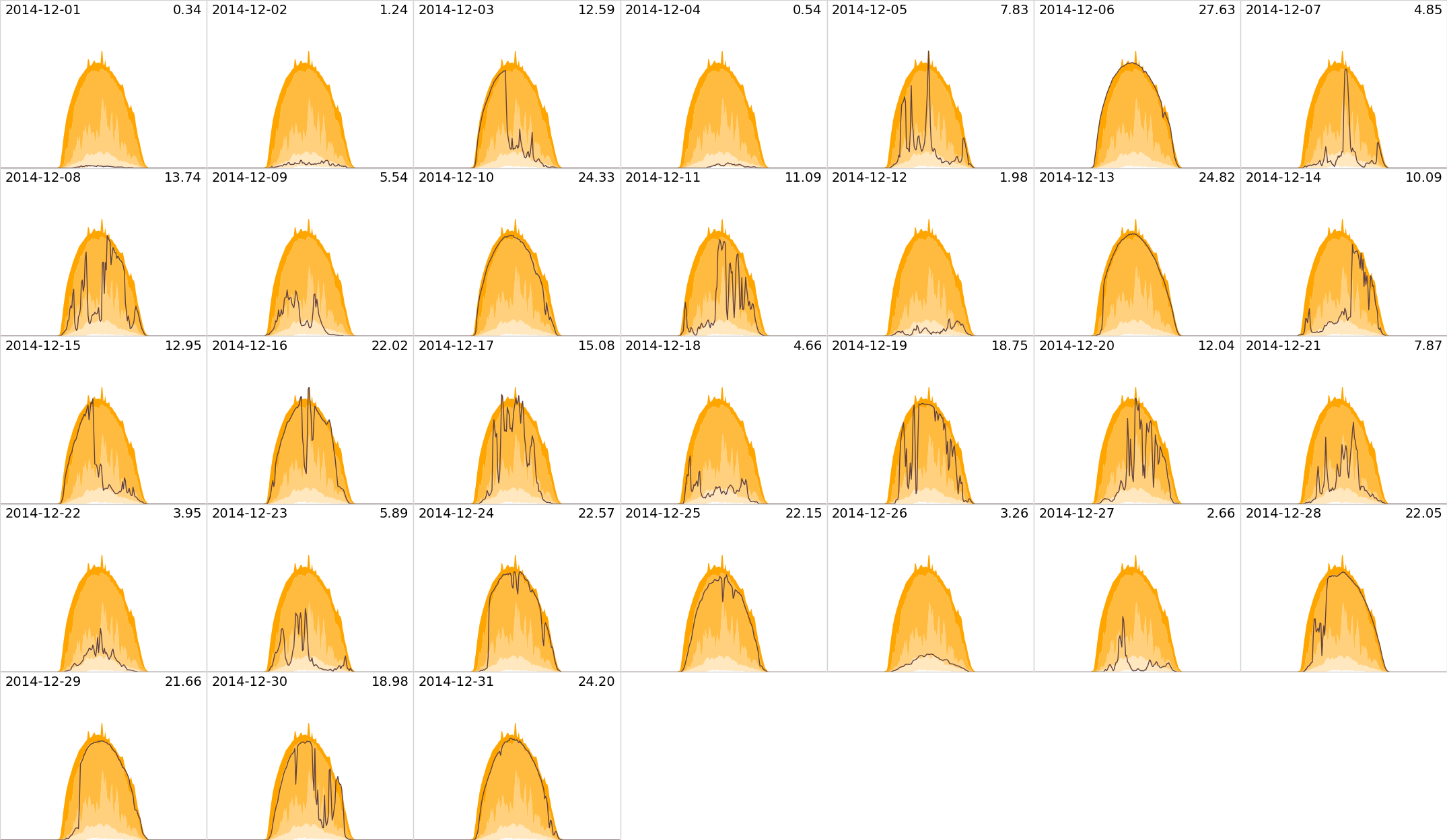
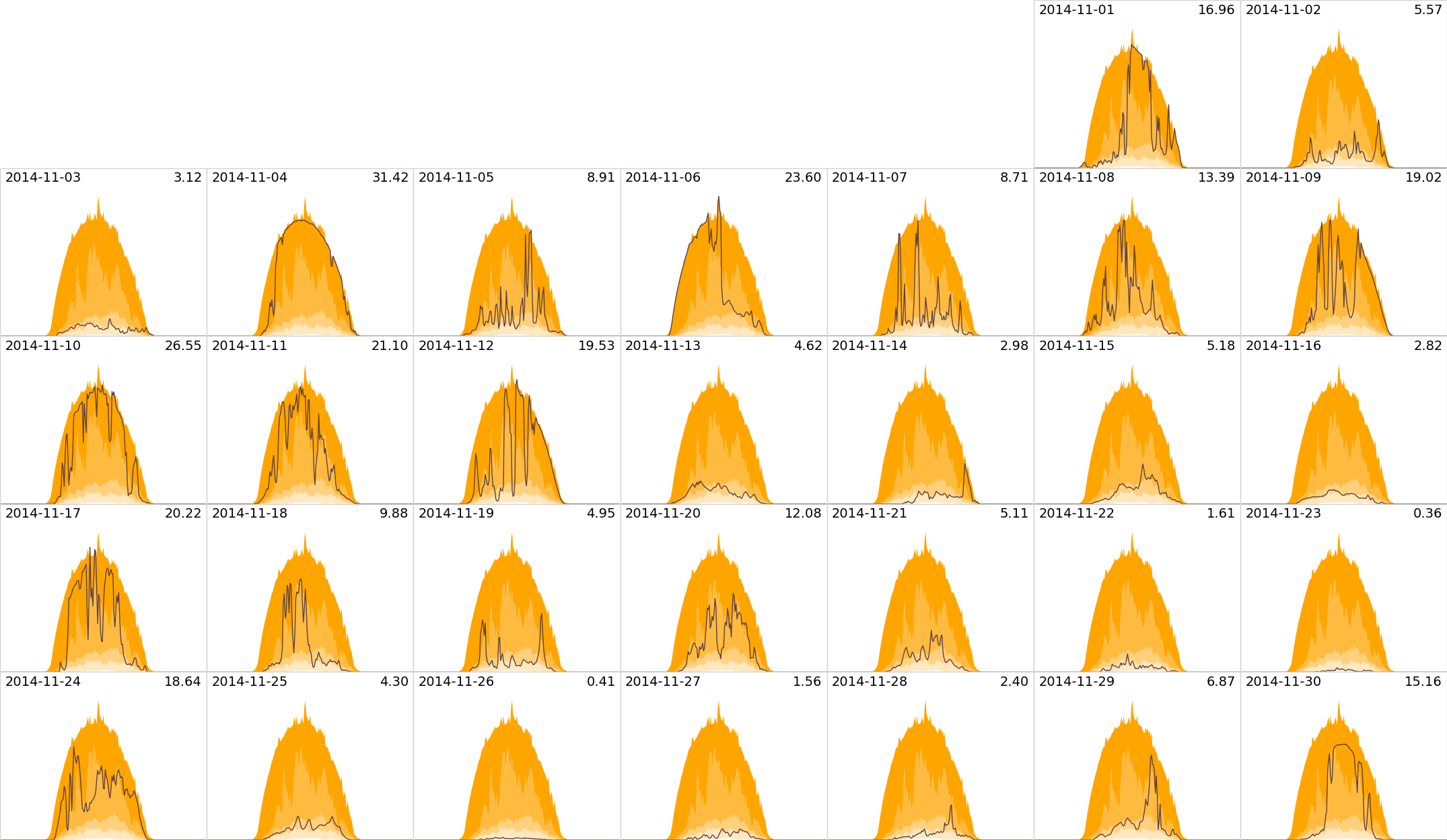
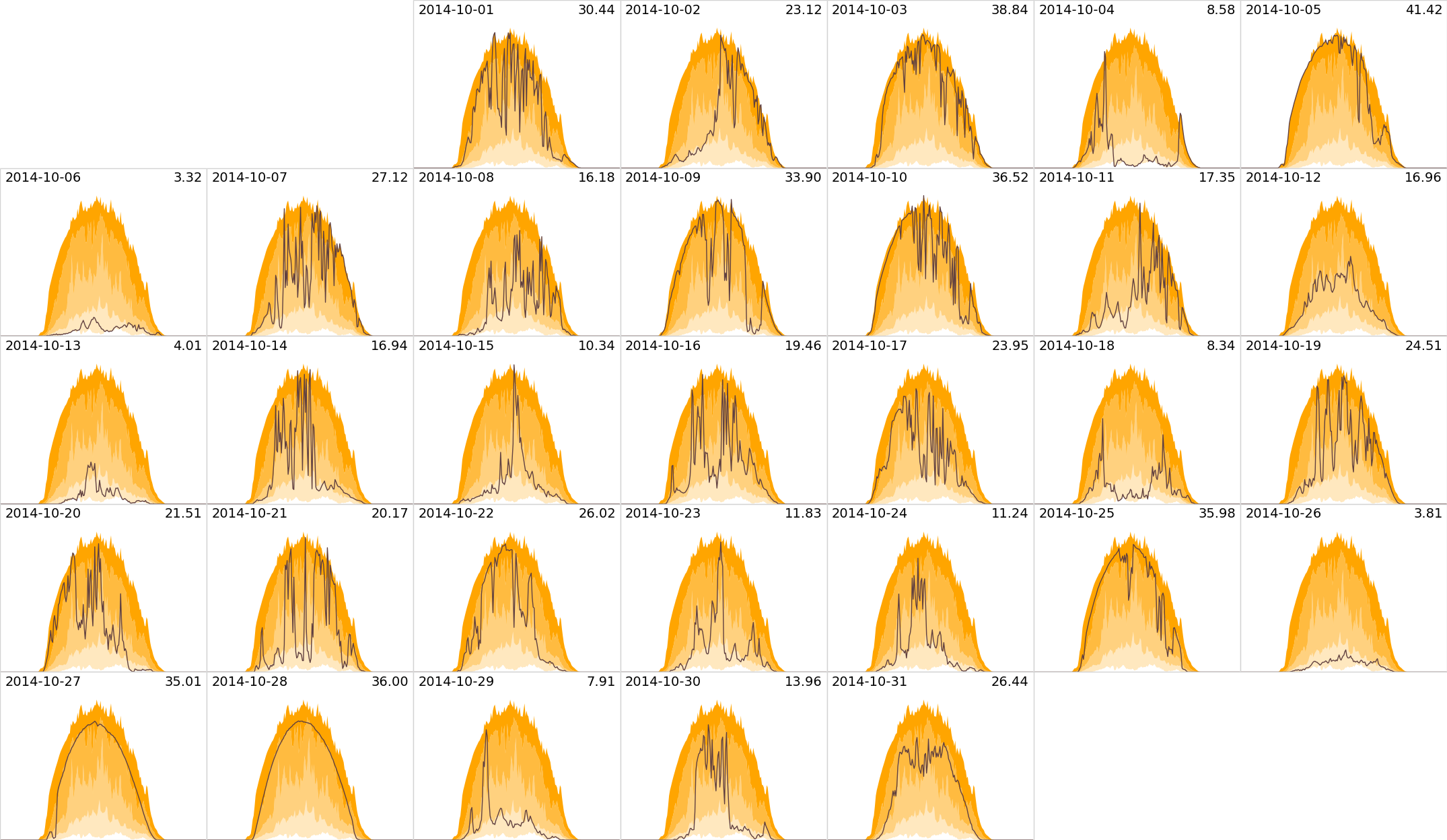
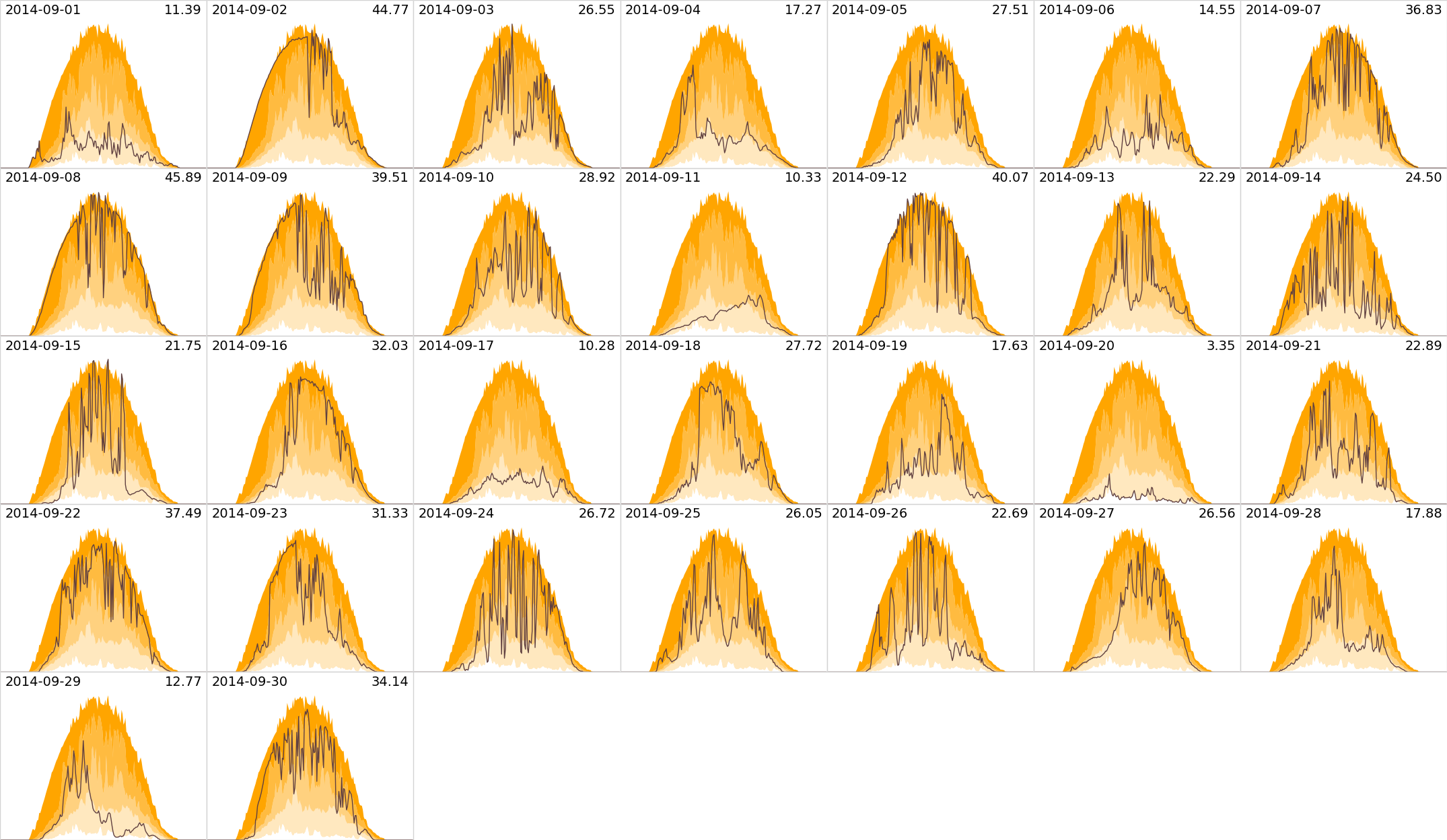
Monday 25th of August stands out as having much less sunshine than any other August day. It was the Bank Holiday Monday, of course.
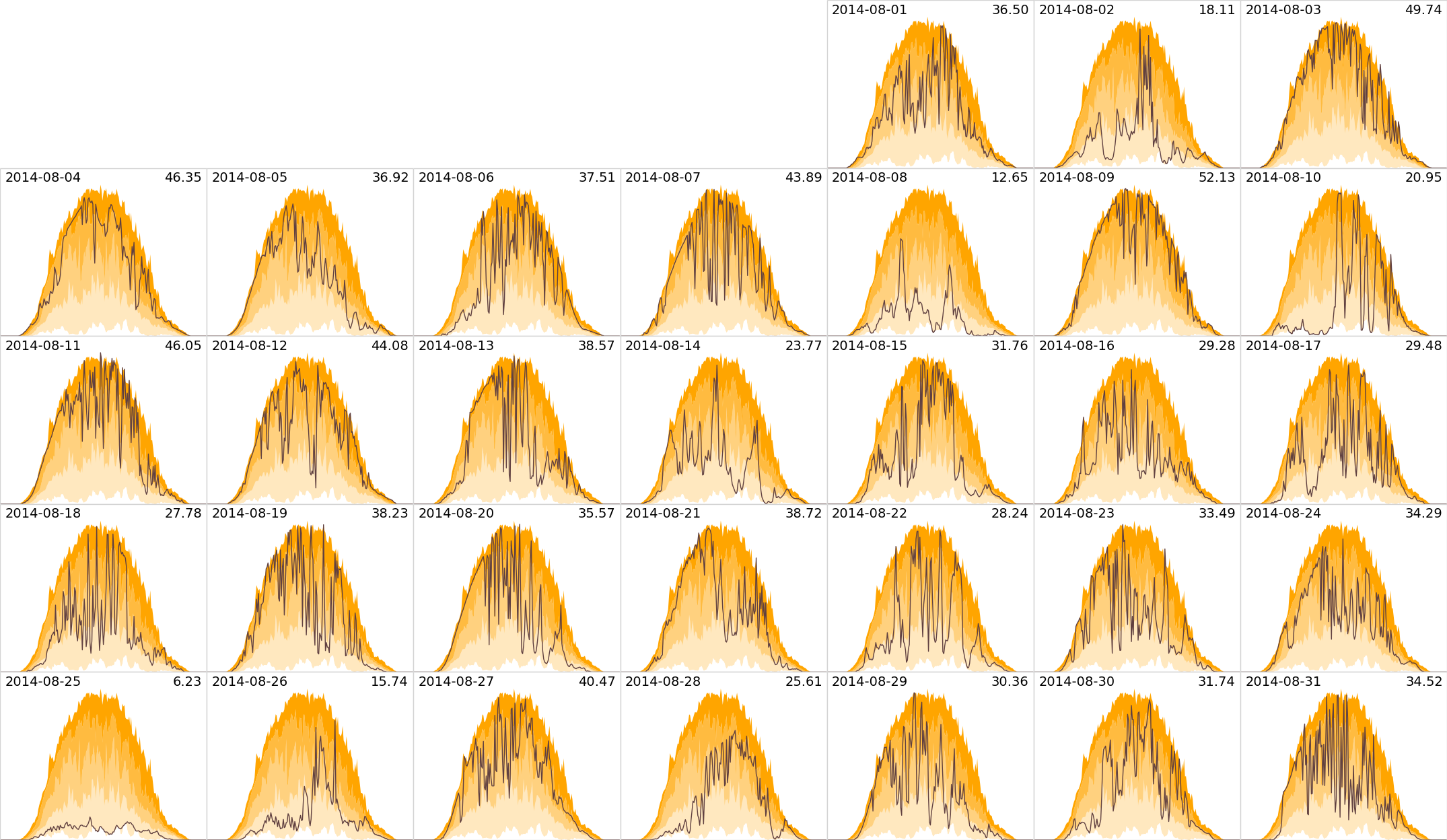
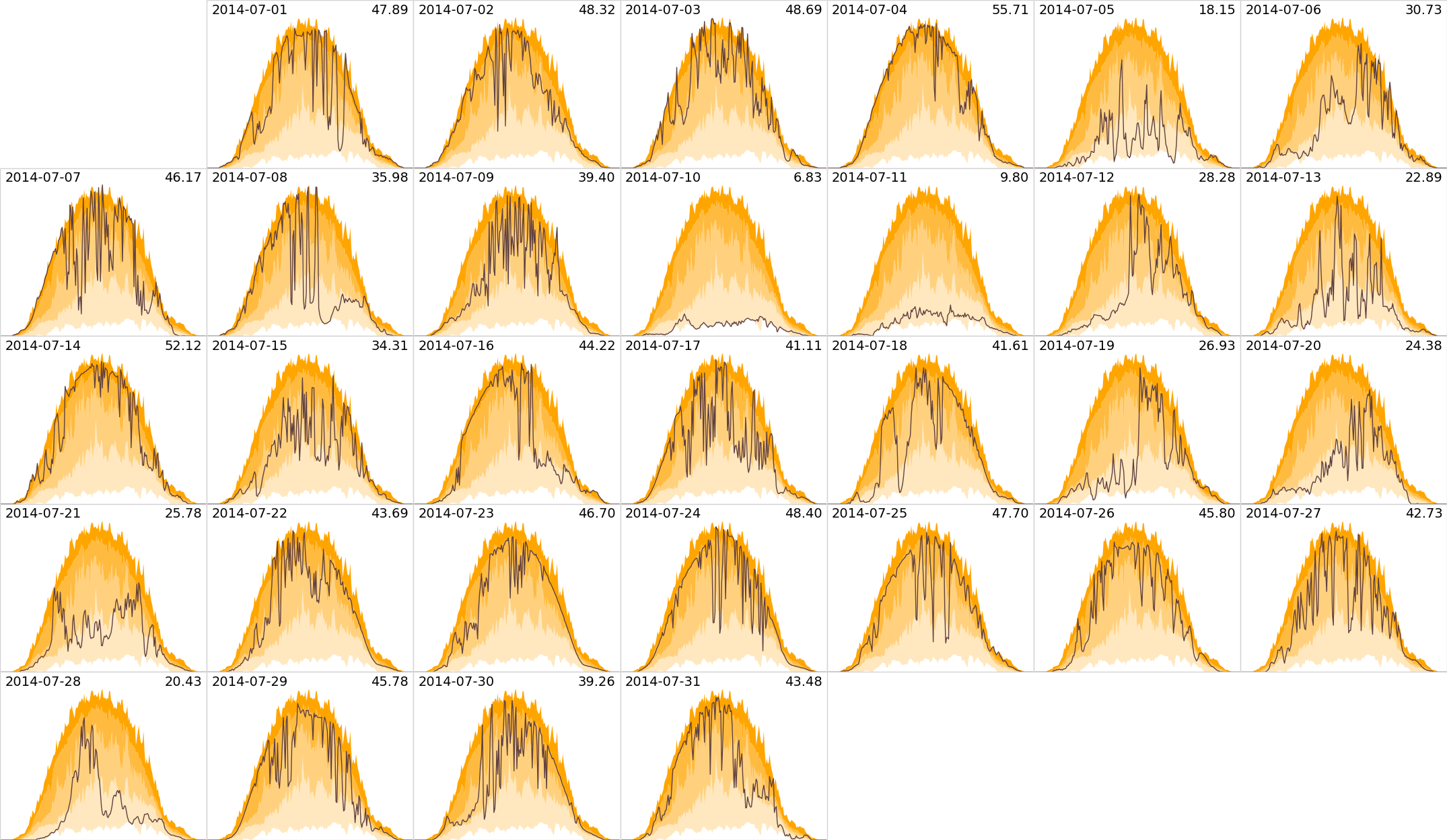
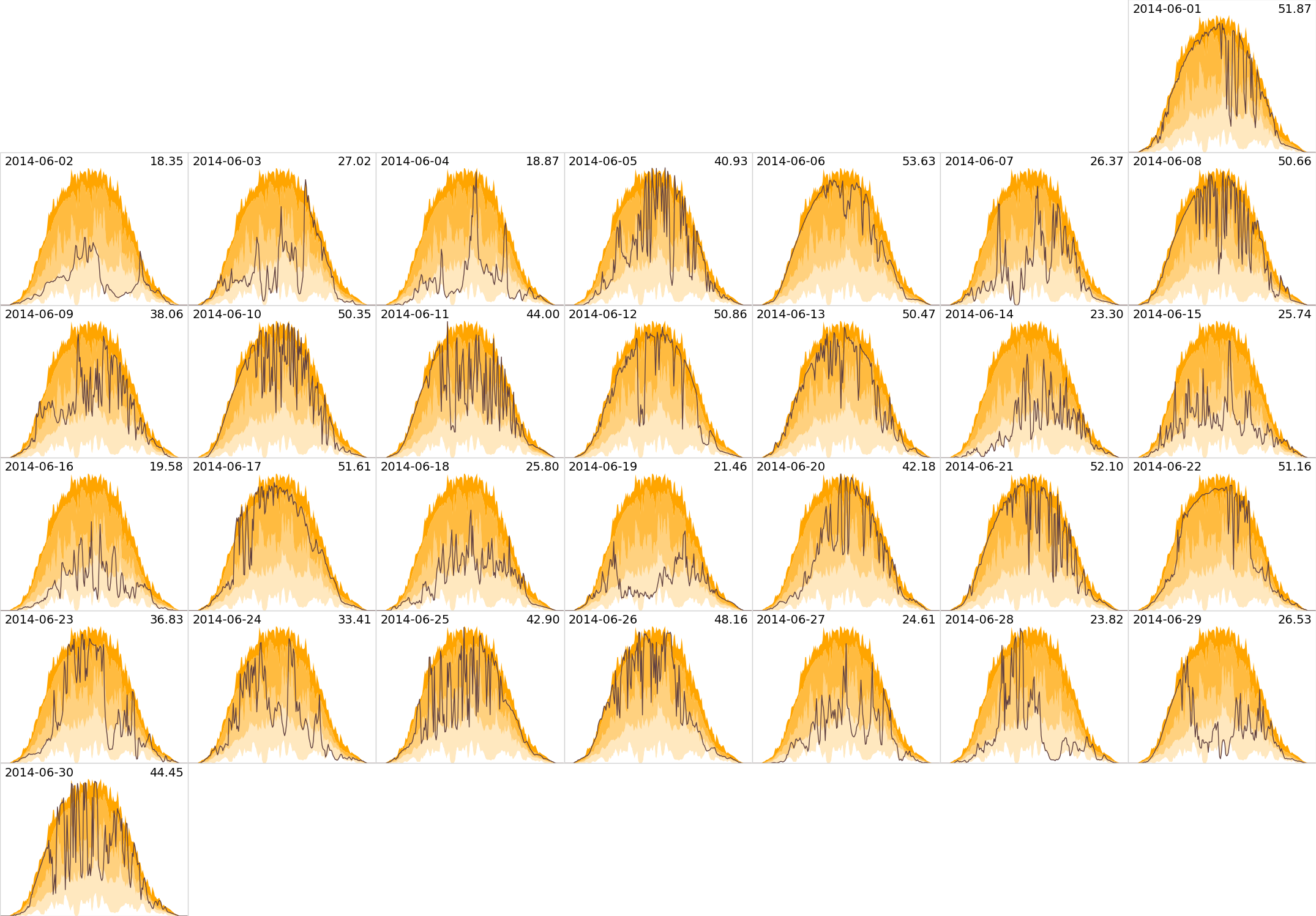
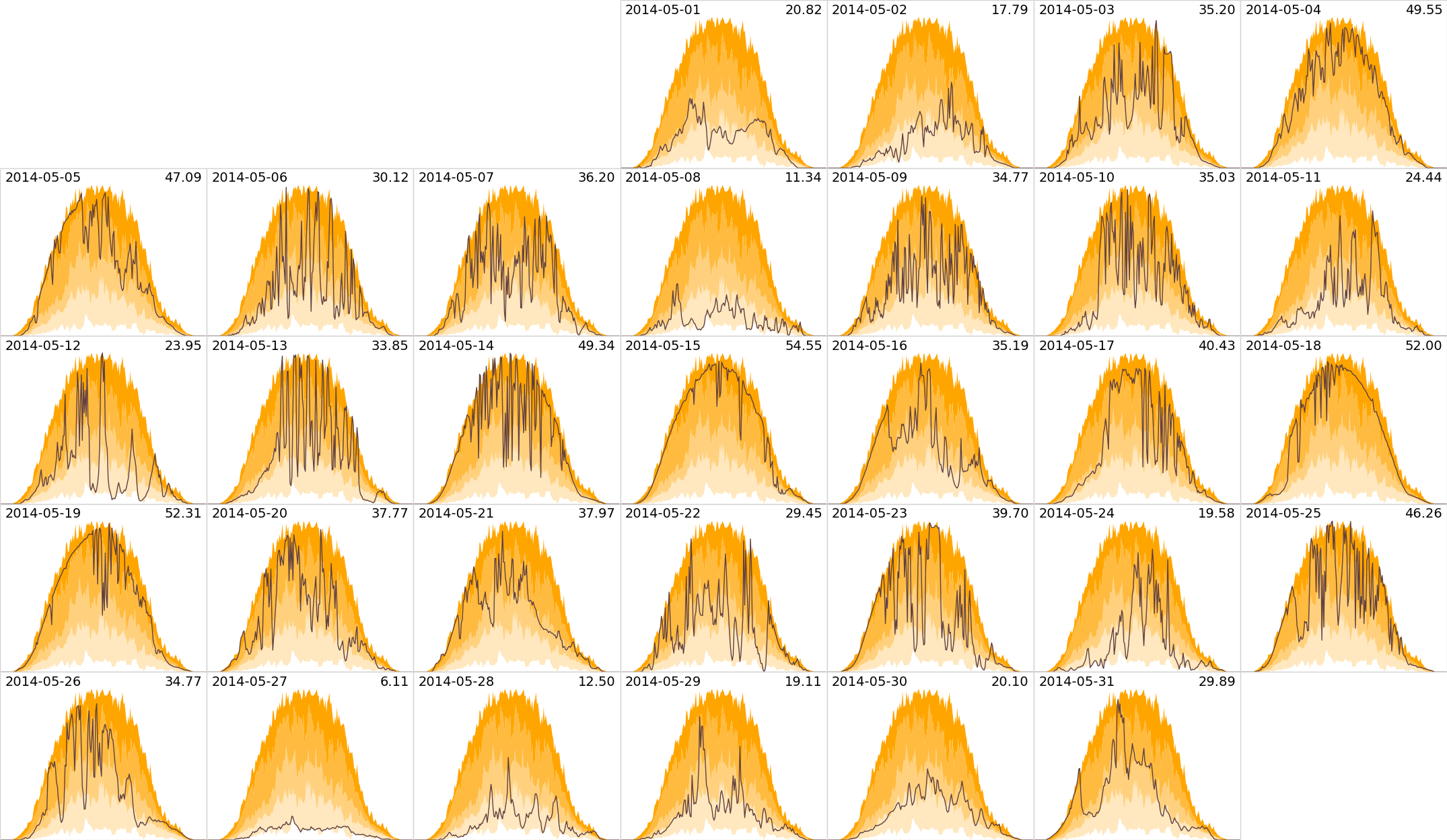
The dip to zero on 14 April is when the power was off for a few minutes while our electricity meter was being changed from mechanical to electronic. There was a very long power cut on 24th of April. The other dips are just clouds.
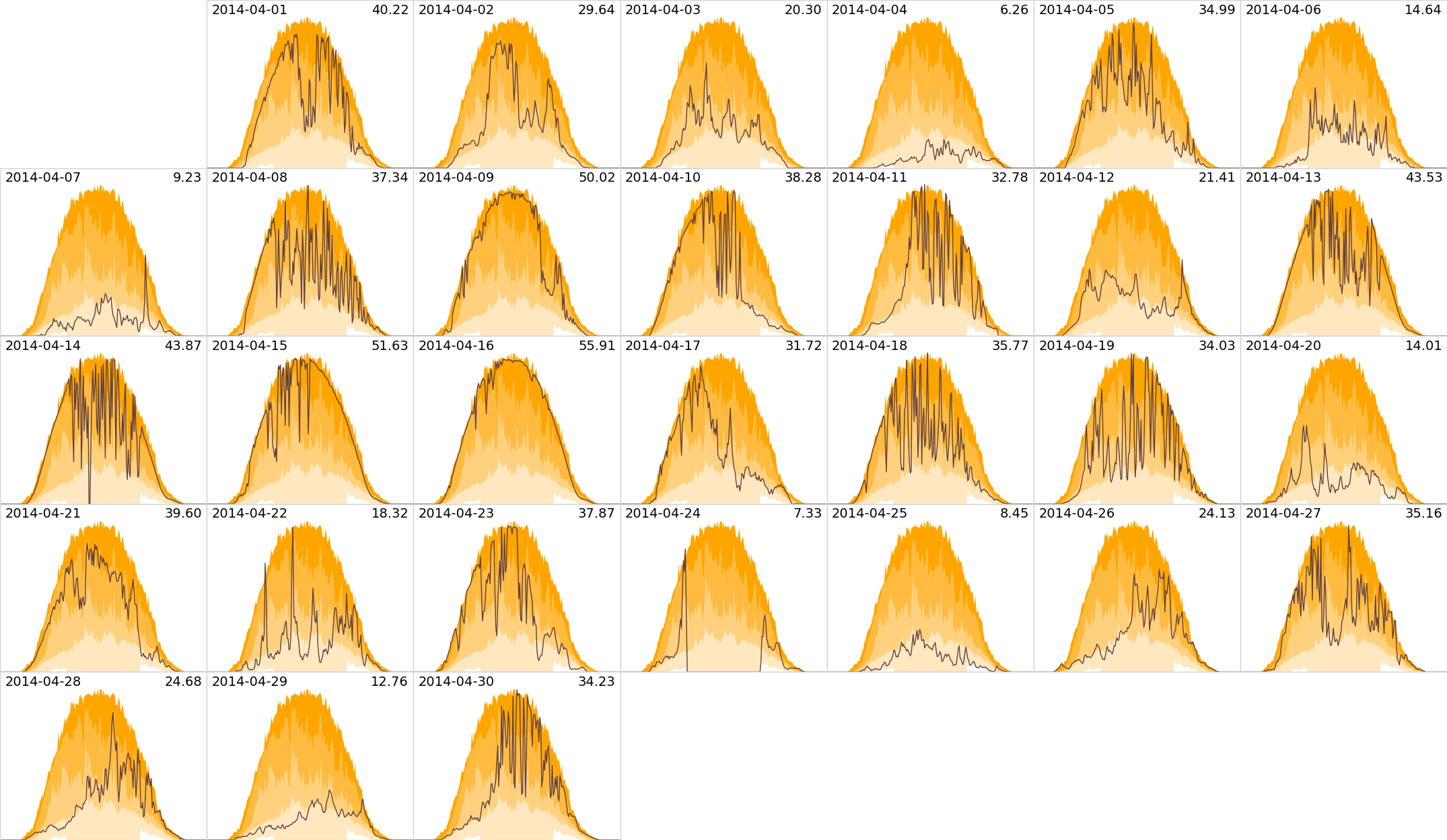
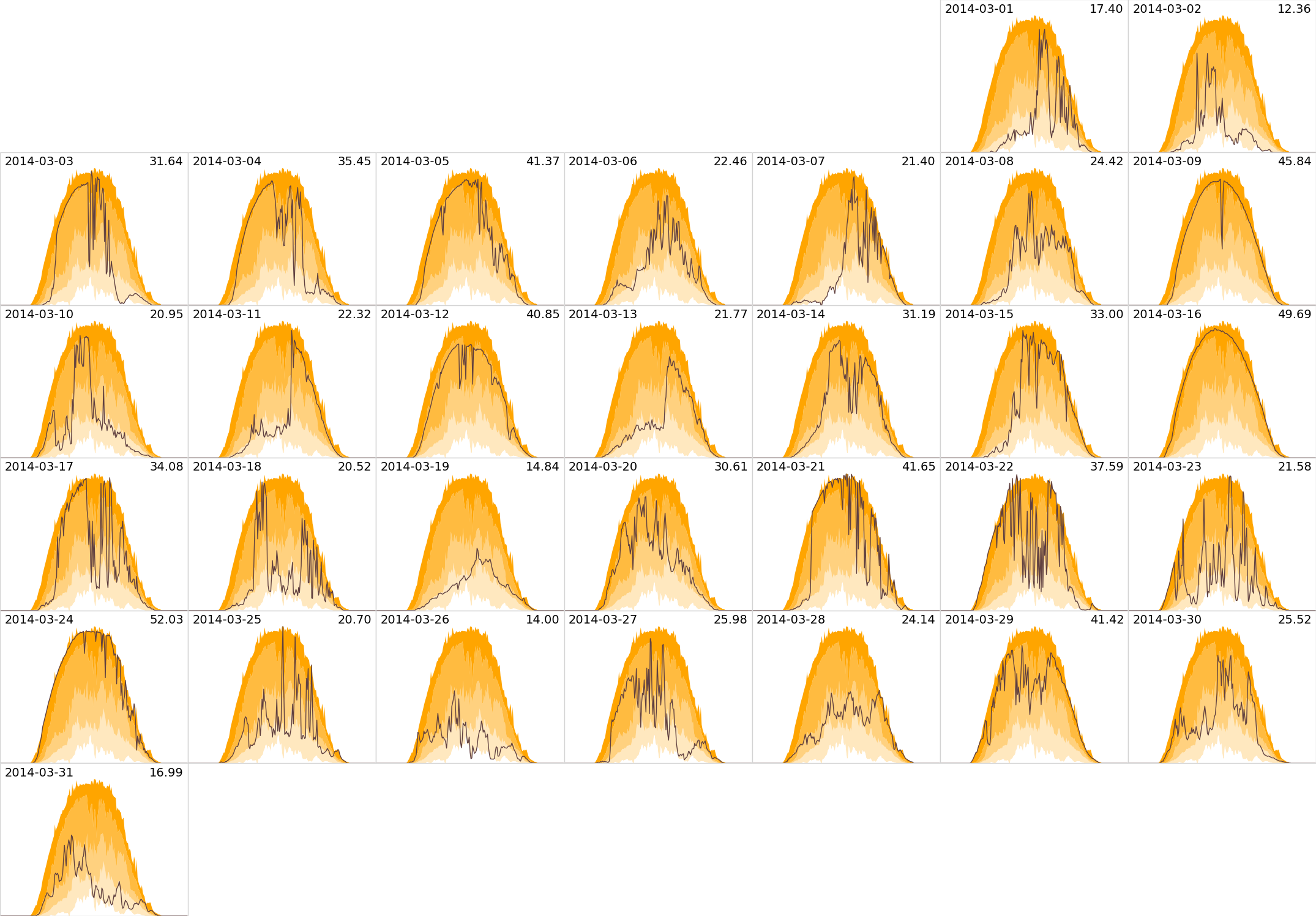
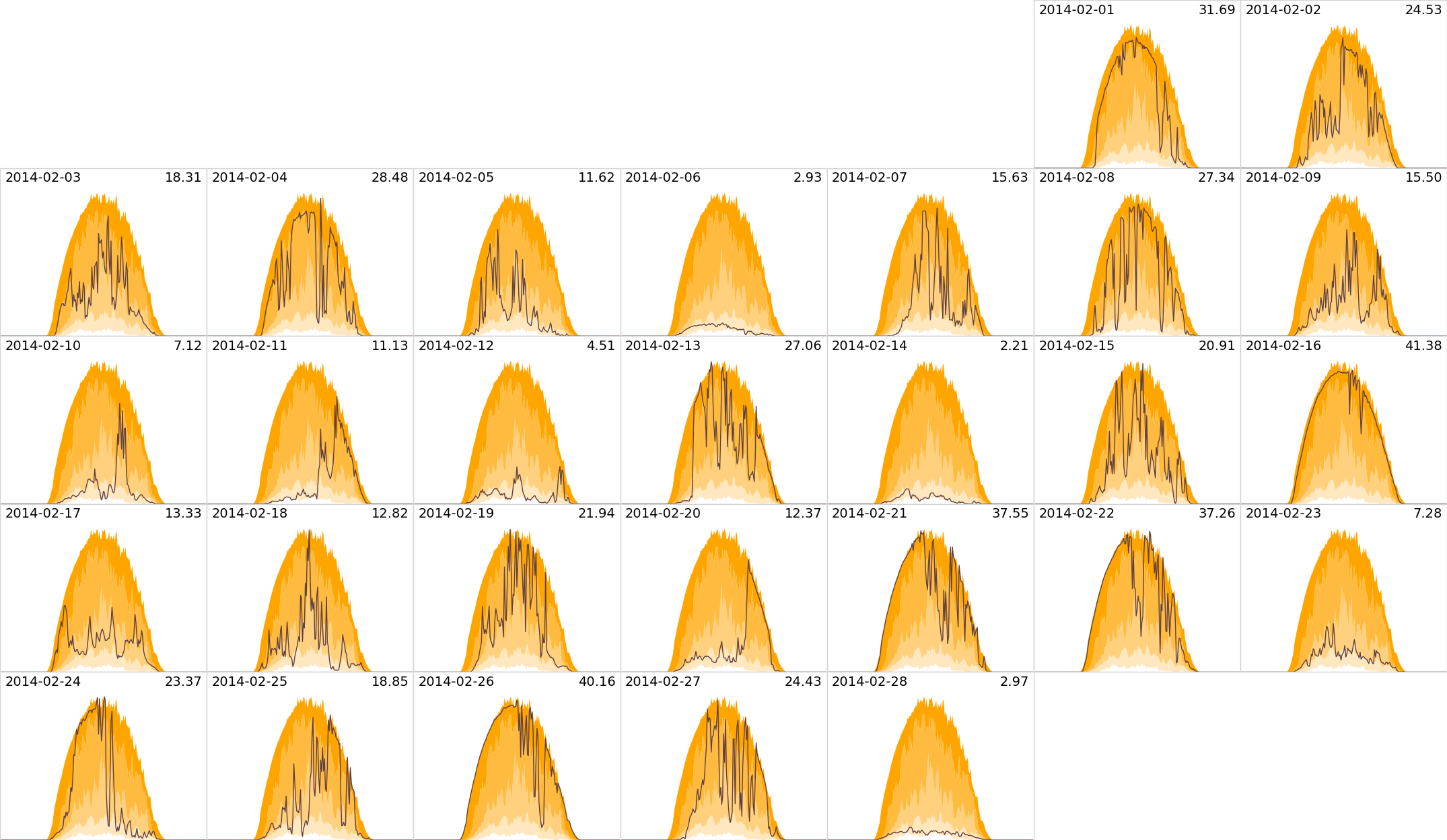
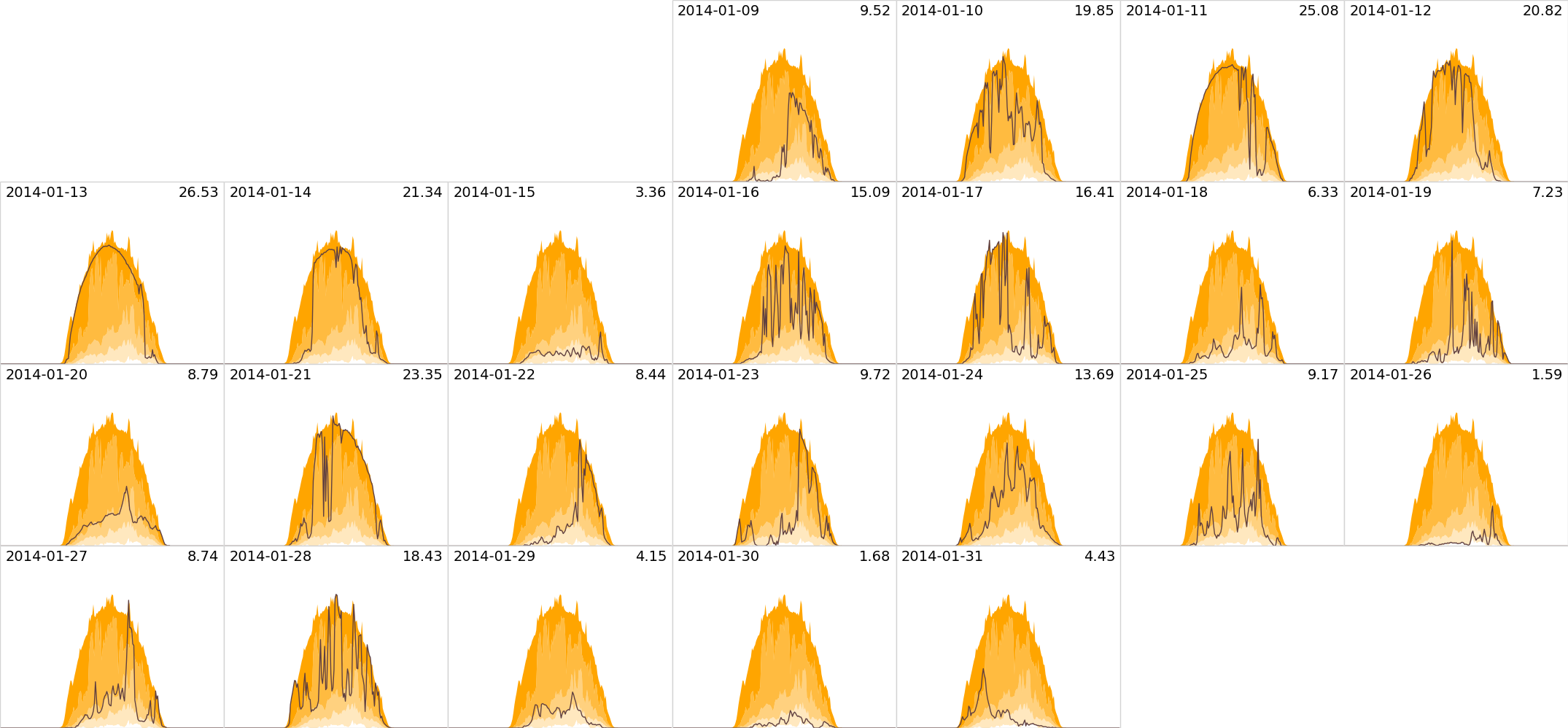
Our daily power used and export, in kWh. The region above the axis represents our usage: orange is generated usage, red is the extra imported from the grid. The green region below the line is surplus generation exported to the grid.

Our daily power used and export, in kWh, by month, using (a) a jitter plot (some jitter is applied to the horizontal position, to prevent overlapping) and (b) violin plots (a notched box and whisker plot—where the box shows the inter-quartile range, with 95% confidence interval notches; whiskers show data within 1.5*IQR—plus a kernel density plot). The final, partial, month tends to have larger notches, because it has less data.
The region above the axis represents our usage: orange is generated usage, red is the extra imported from the grid. The green region below the line is surplus generation exported to the grid.
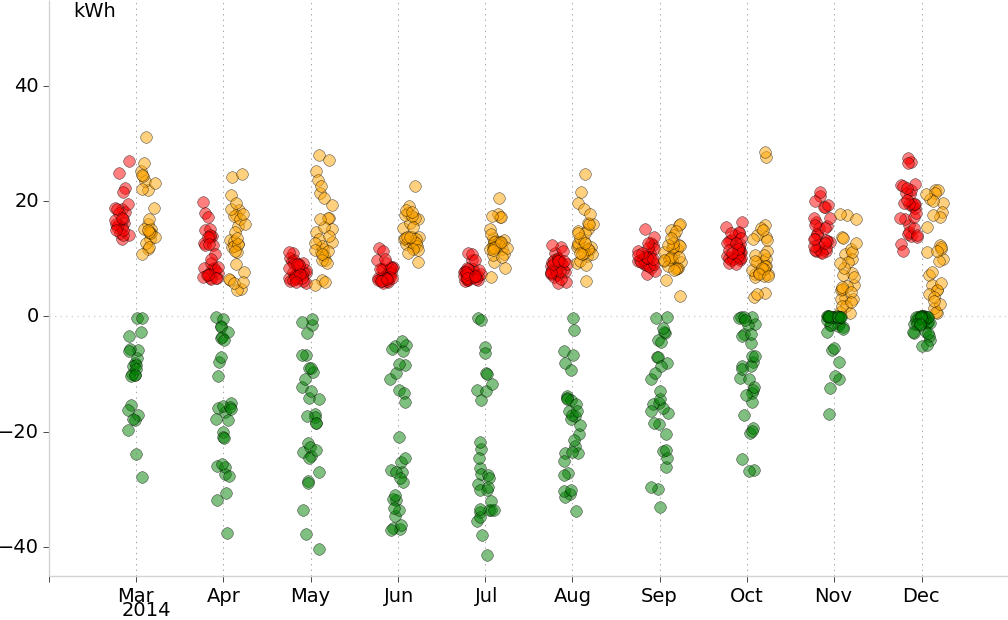
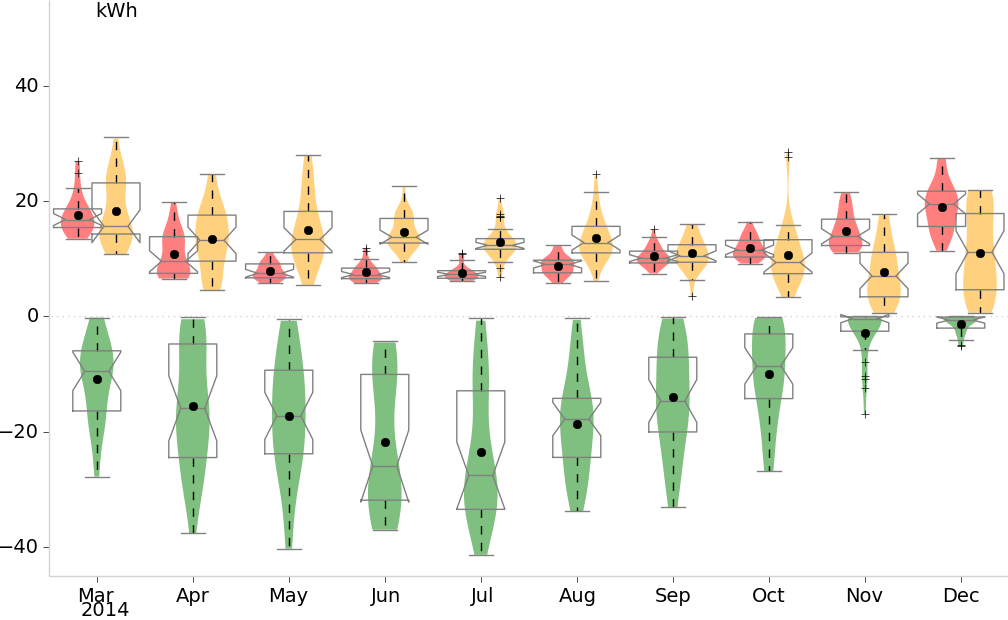
Data is gathered at half minute intervals from the Wattson meter. The horizontal time axis runs from midnight to midnight GMT/BST. The vertical axis runs from -8kW to 8kW. The region above the axis represents our usage: orange is generated usage, red is imported from the grid. The green region below the line is surplus generation exported to the grid.
On the daily plots, you can see specific usage. The big early morning generated usage is from the immersion heater. The early evening spike at the weekends is dinner being cooked in the electric oven; during the week we usually use the gas hob.
When the green area below the line is greater than the red area, we exported more than we imported, so are nett generators (date shown in green). There are days where we import more than we export, taking more from the grid than giving back: on “orange” days we still generate more than we import, but use enough of it that we are not nett exporters; on “red” days we import more than we generate, but even so, may still export a little during the day. (The situation is actually greener than this implies: some of the orange usage of generated power is being used to heat our water, thereby saving gas consumption, too.)
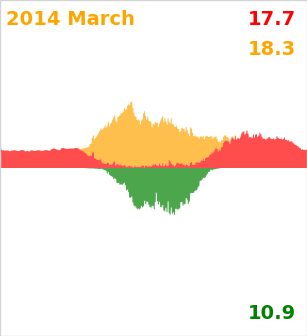
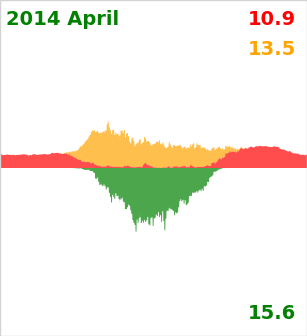
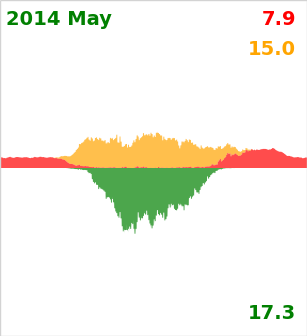
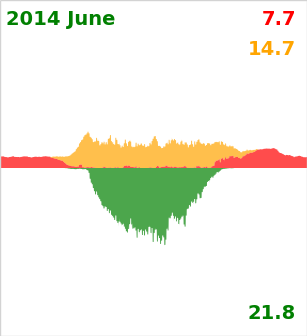
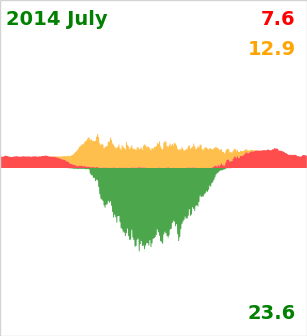
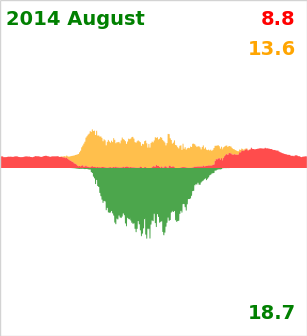
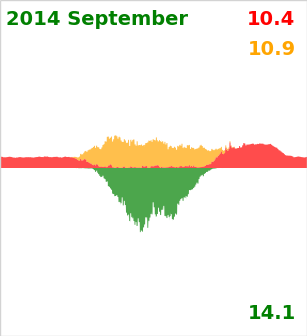
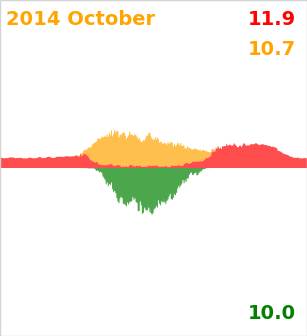
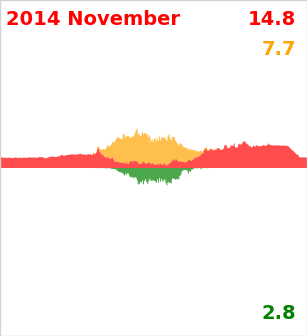
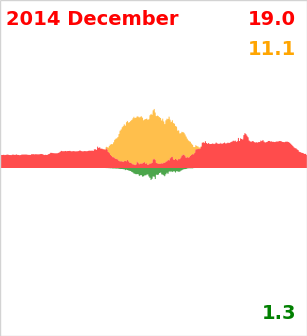
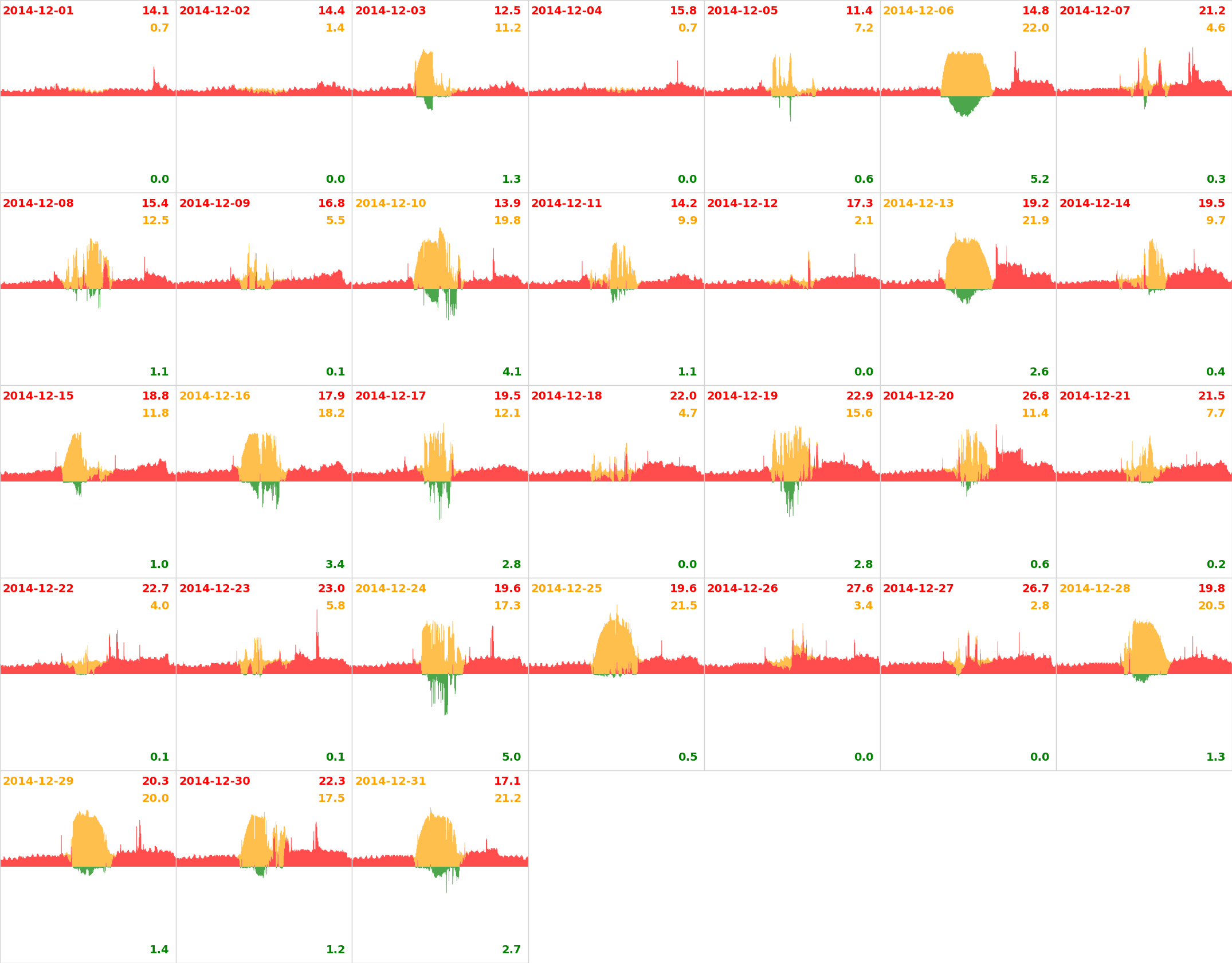
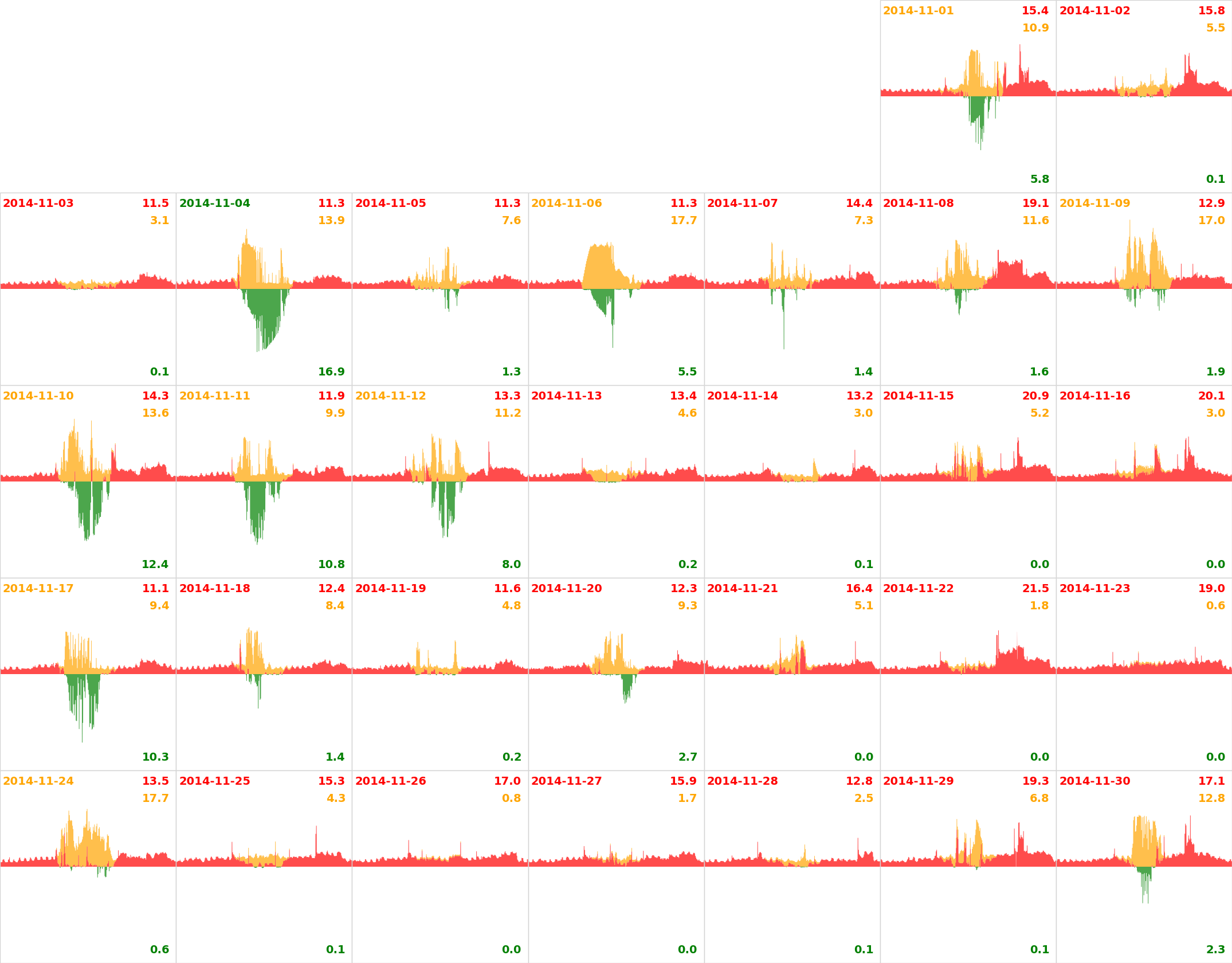
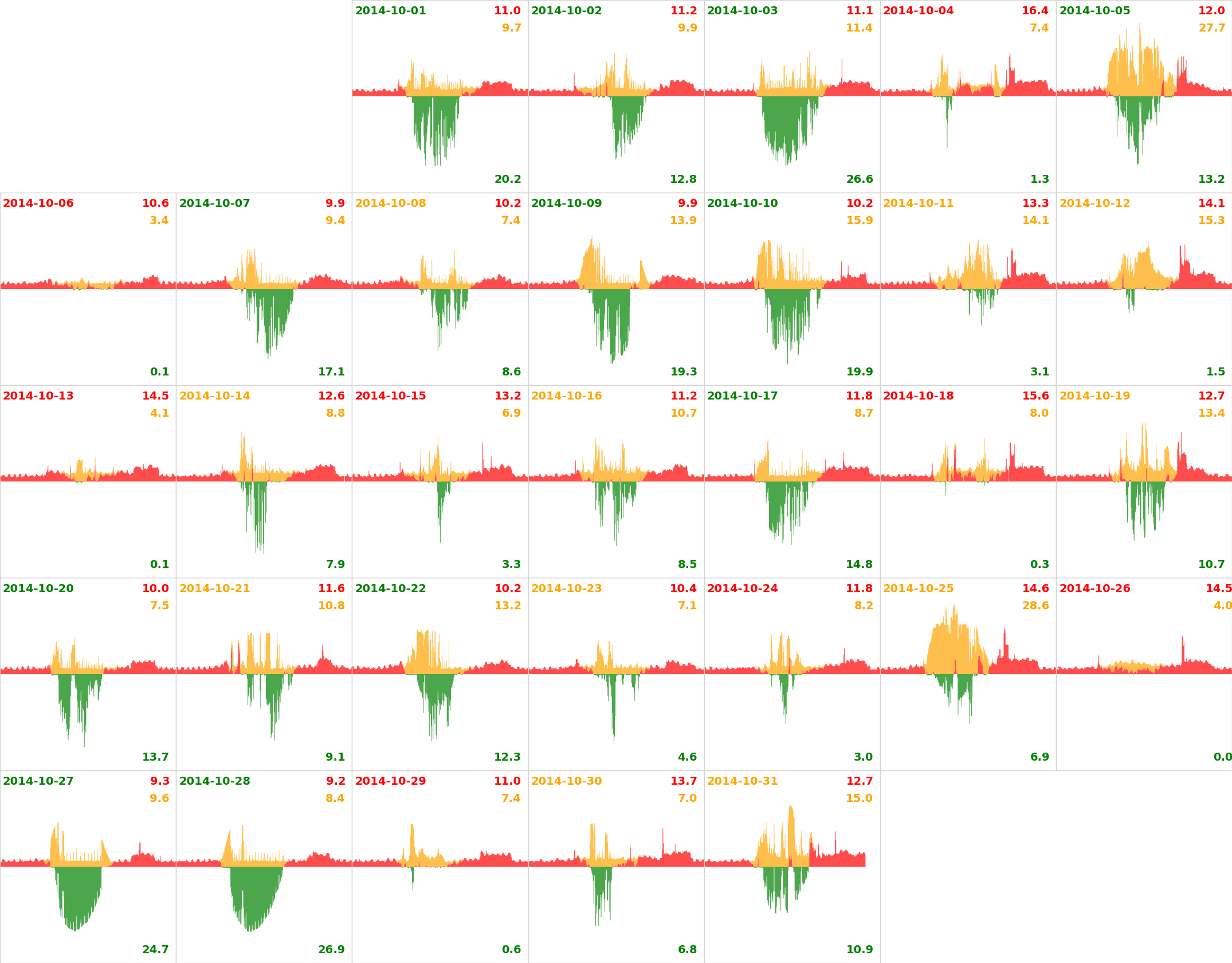
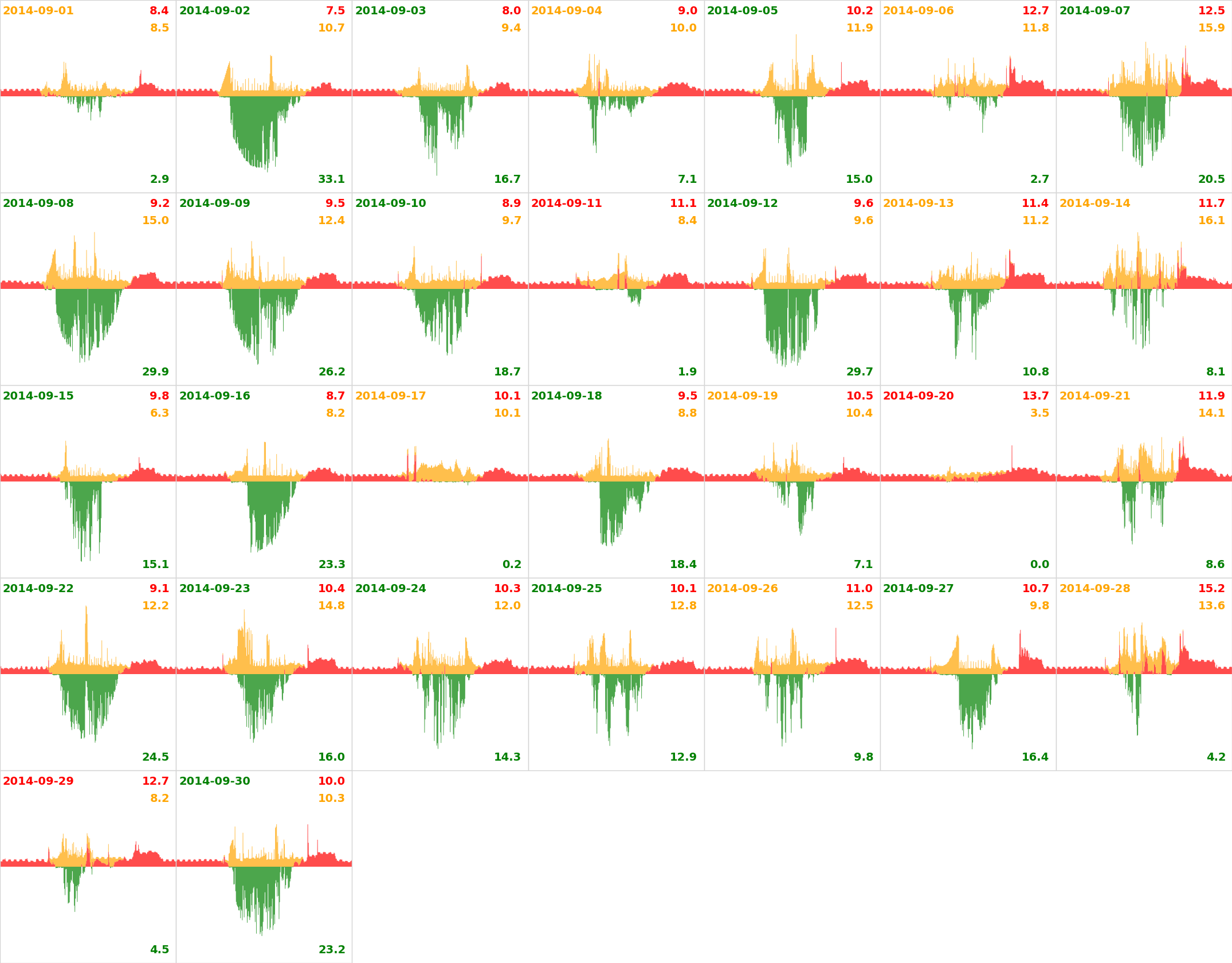
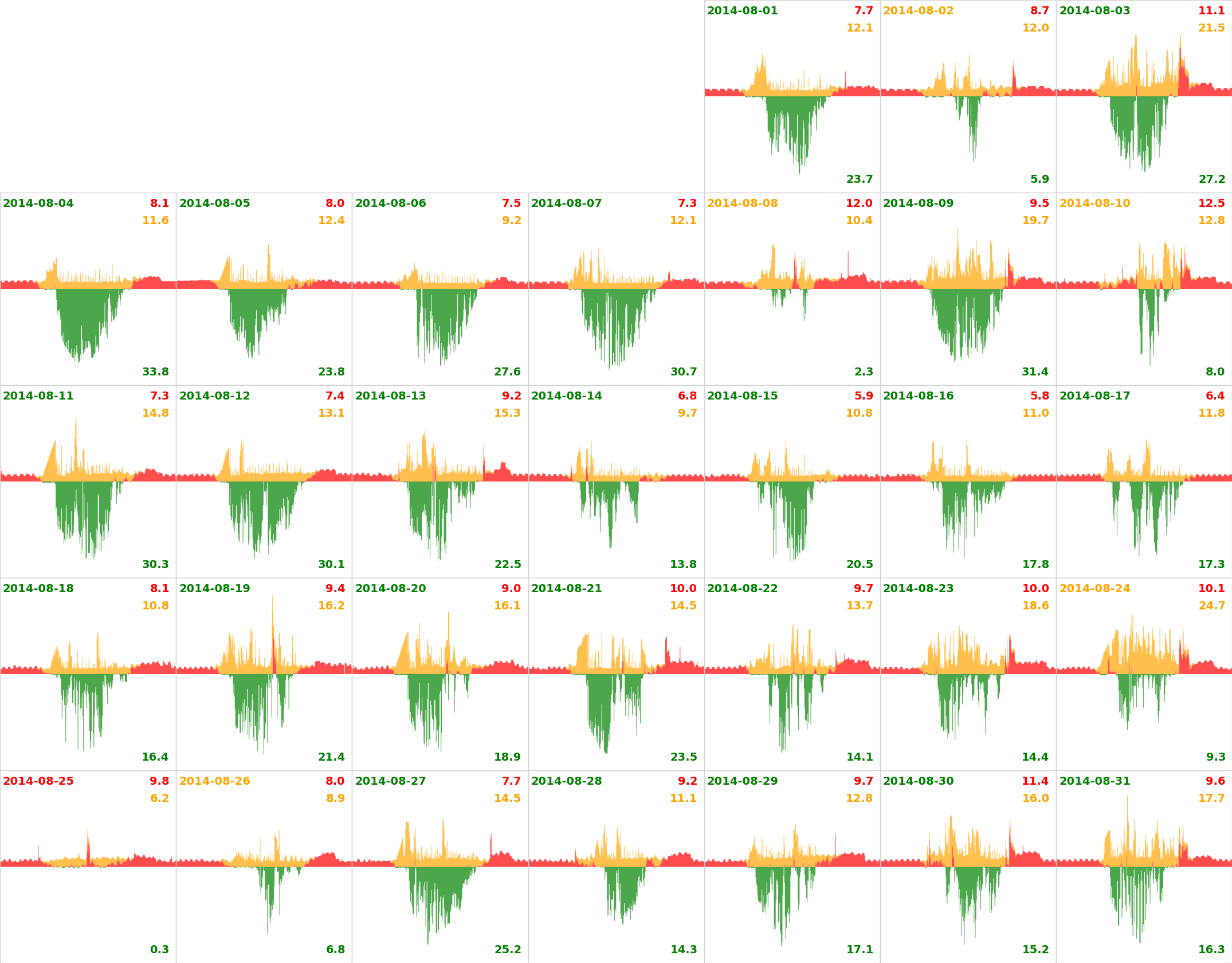
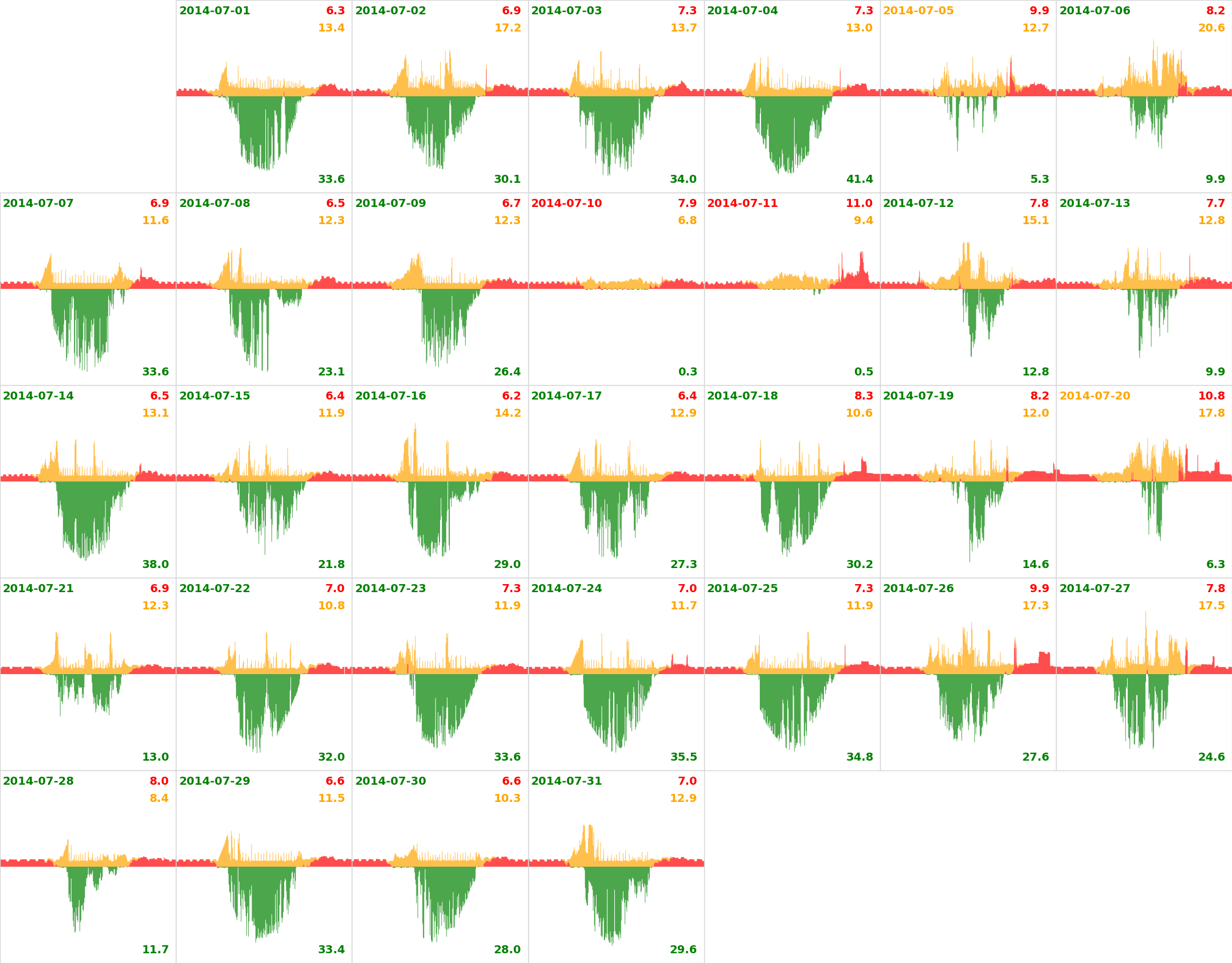
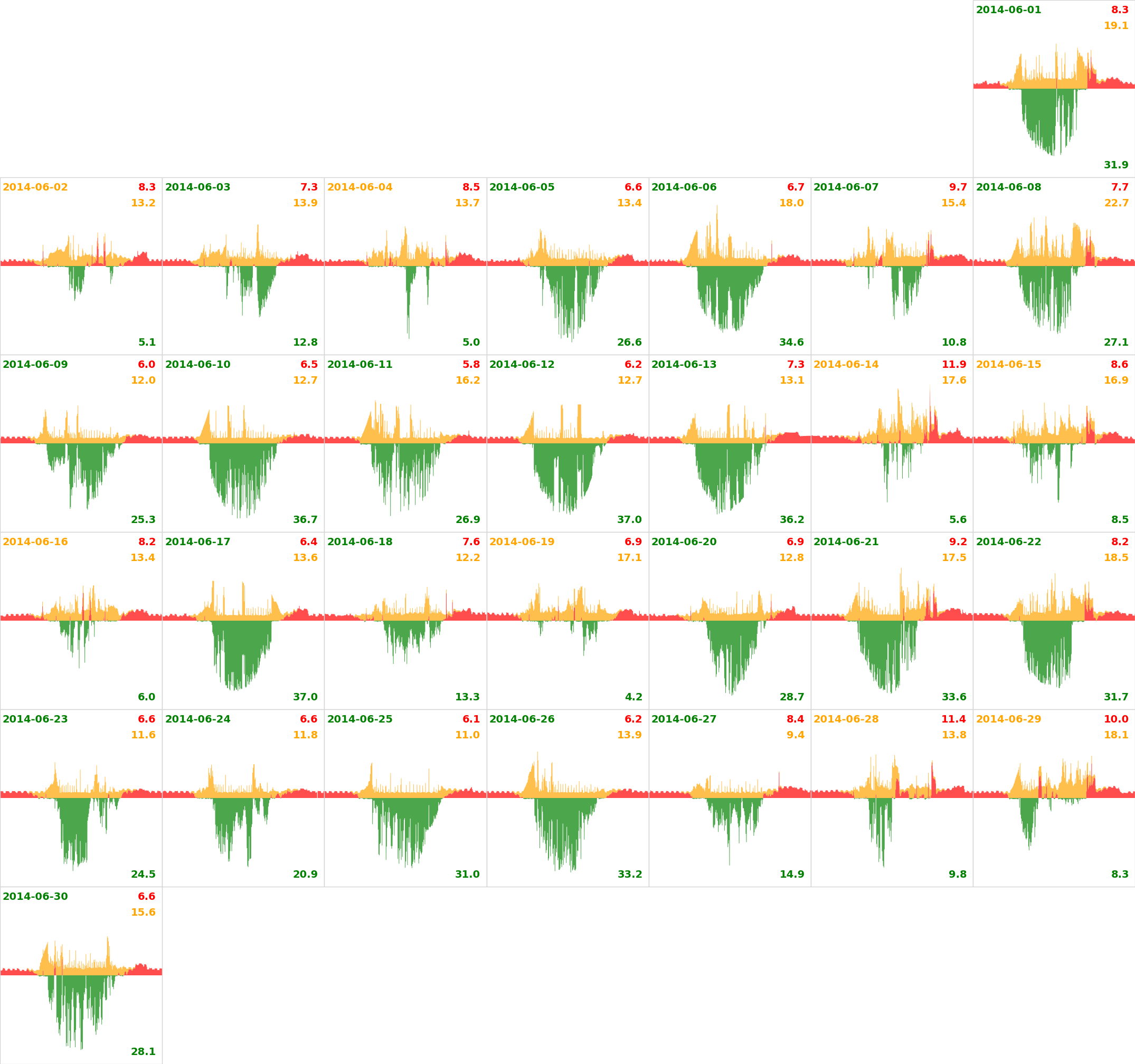
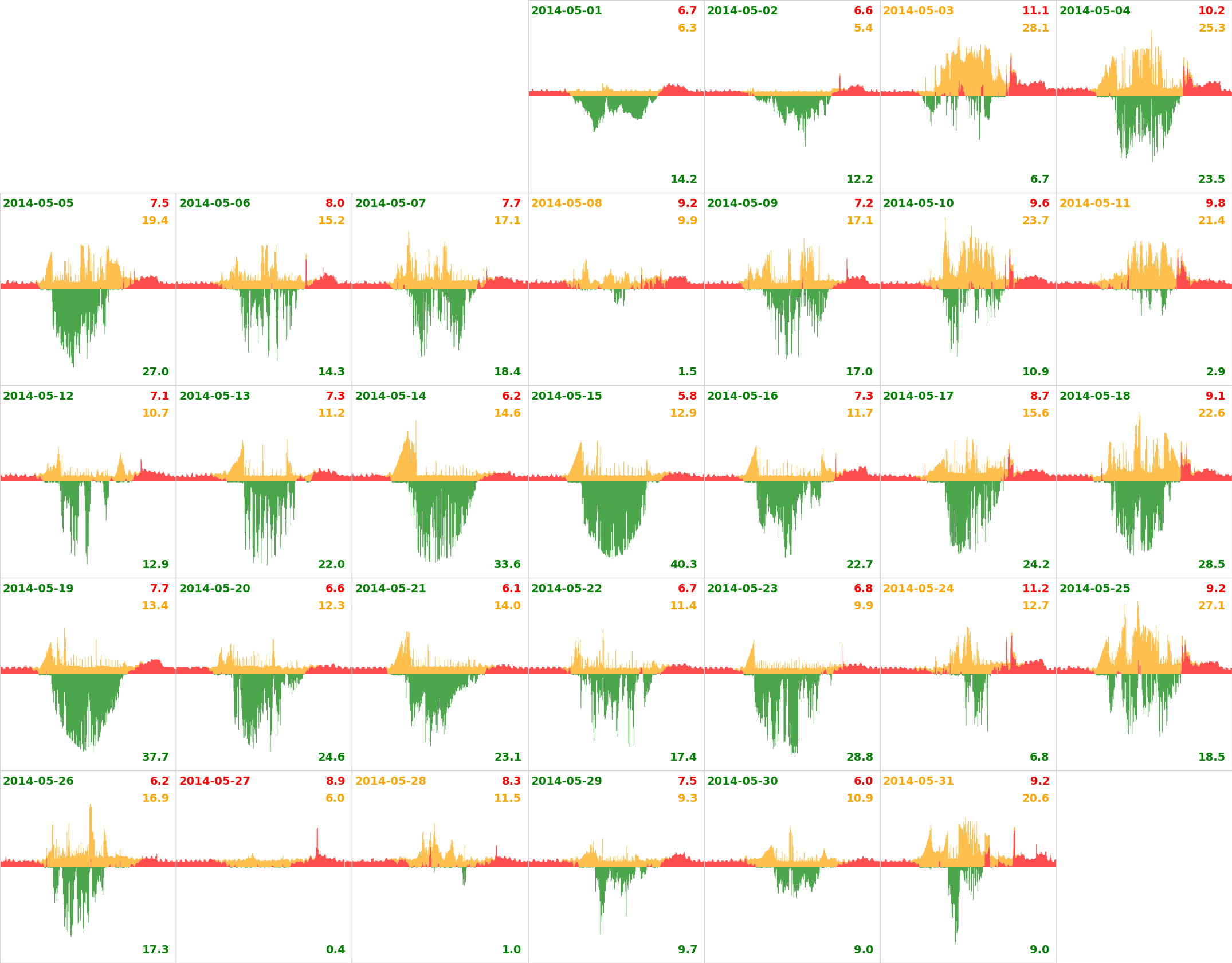
Mid April it got warm enough that we switched off the heated towel rails: our night time usage noticeably dips. There was a very long power cut on 24th of April. After that the Immersun, which diverts spare power into the immersion heater, stopped working until 3 May, when we rebooted it properly.
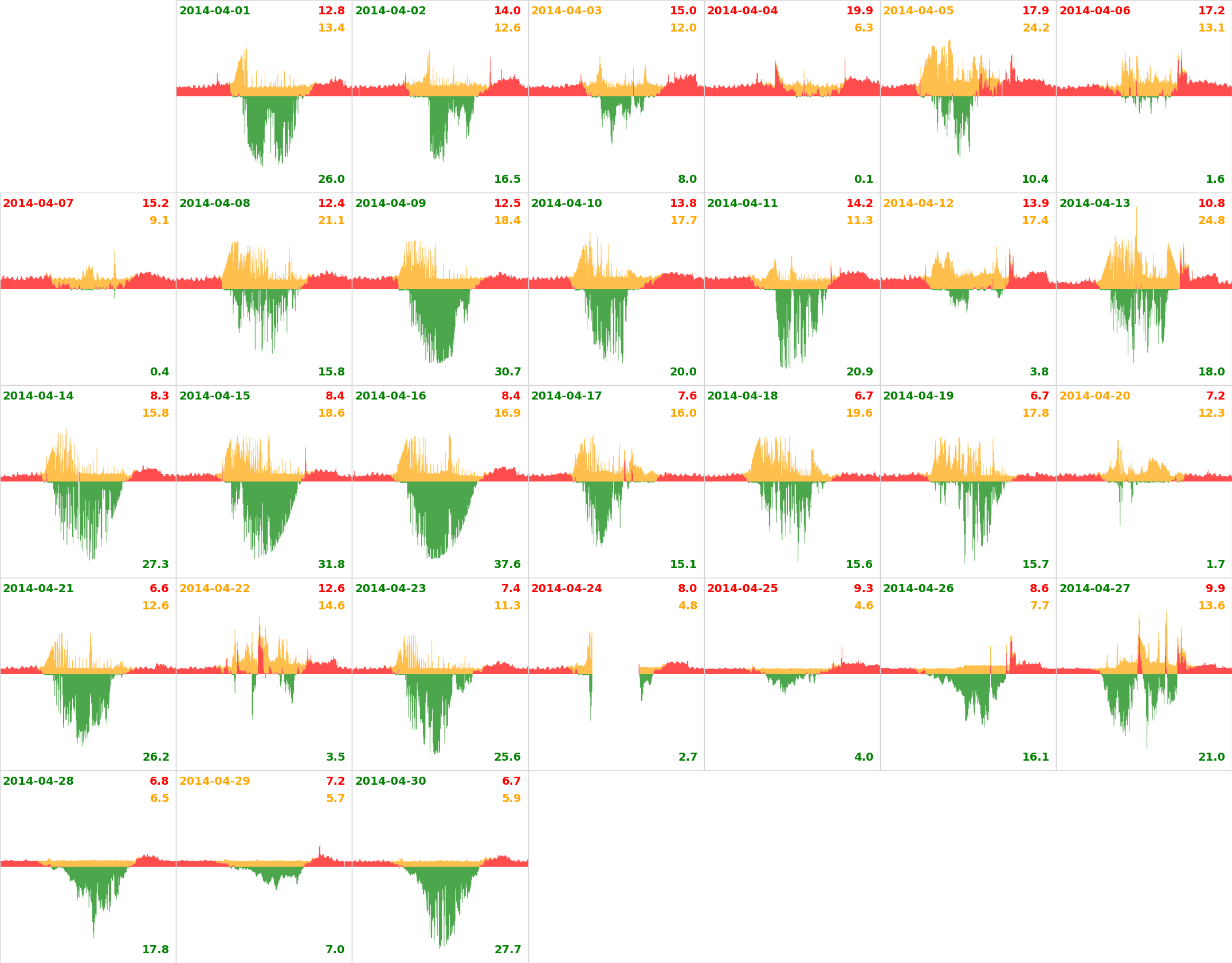
17th, 18th, 19th, 26th we had the “boost” on the immersion heater switched on, because the gas boiler had a fault, so we had no gas heating.
